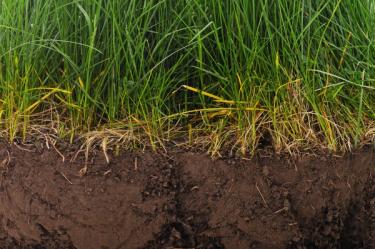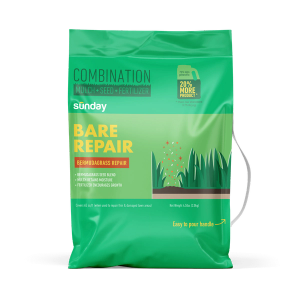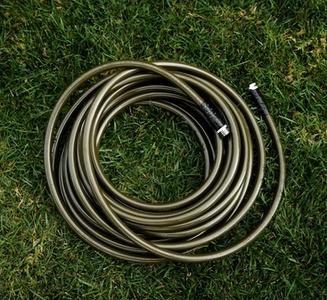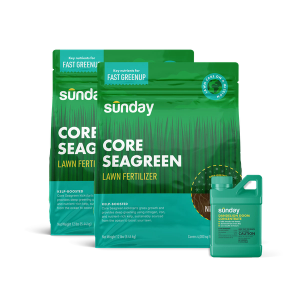What is lawn thatch?
Thatch is the undergrowth layer of stems, roots, stolons and rhizomes between your beautiful, green lawn and the soil surface.

How much lawn thatch is healthy?
One inch of thatch between your soil and very bottom of grass blades is pretty normal. Any more than that can cause issues. Thatch helps your lawn by retaining moisture and protecting grass roots from drastic temperature change. However, excessive thatch can decrease oxygen and choke out new grass growth.
Causes of excessive lawn thatch
- Over-fertilization with lawn fertilizers oversupplying nitrogen can cause extreme thatch growth. With Sunday, you'll only get precision nitrogen.
- Unhealthy soil may be missing key microbes that naturally break down thatch. (Want to know if your soil is healthy or needs nutrients? Every Sunday lawn care plan comes with a complementary soil lab test).
- Overuse of pesticides can kill off earthworms that naturally burrow through thatch, moving it from the surface deeper into the soil where it can decompose.
How to dethatch like a pro
When you've got over an inch of thatch, it's pretty simple to remove a bit of it to get your lawn back on track. Here's how:
Measure your lawn's thatch
Take a close look. Here are three tell-tale signs you might have excessive thatch:
- You have more than an inch of thatch
- Thatch is more tan in color than green
- Thatch is tightly woven together.
Mow at your normal height
Mowing your lawn at the right height is all about your grass type. If you have cool-season grasses mow down to 3-4 inches. With warm-season keep your cut at 2-3 inches high.
And remember: Cut only 1/3 of your grasses total height.
Sunday Tip:
If you regularly leave your grass clippings in your lawn, bag the clippings just this one time!
Rake away excessive thatch
You can use a special dethatching rake, but we prefer a good old-fashioned garden rake. Use the tines of the rake to pull thatch upward and away. Don’t be too aggressive. Remember, ½ inch of thatch is a good thing.
BONUS POINTS: Compost the thatch.
How to prevent lawn thatch long-term
The best offense is a good defense. So, get out ahead of it. Here are 4 tips to prevent excessive thatch in your lawn.
- Don’t over fertilize. Use multiple smaller feedings over the course of the season so your lawn gets only what it needs right when it needs it. (Not sure how much to fertilize? Order a Sunday Smart Lawn Plan and we'll send you exactly what your lawn needs)
- Add soil amendments at least annually to increase organic matter which, in turn, will benefit soil microbes that break down thatch.
- Keep your mower blade sharp. Sharper blades will grind up cut grass better, allowing it to decompose faster and feed beneficial microbes.
- Choose the right grass for location and sun, but also consider grasses that have lower potential with thatch issues like tall fescue and ryegrass.
Cited sources
Managing Thatch in Lawns. PennState Extension.
Thatch. Colorado State Extension.
What is Thatch? UMass Extension Turf Program.



















